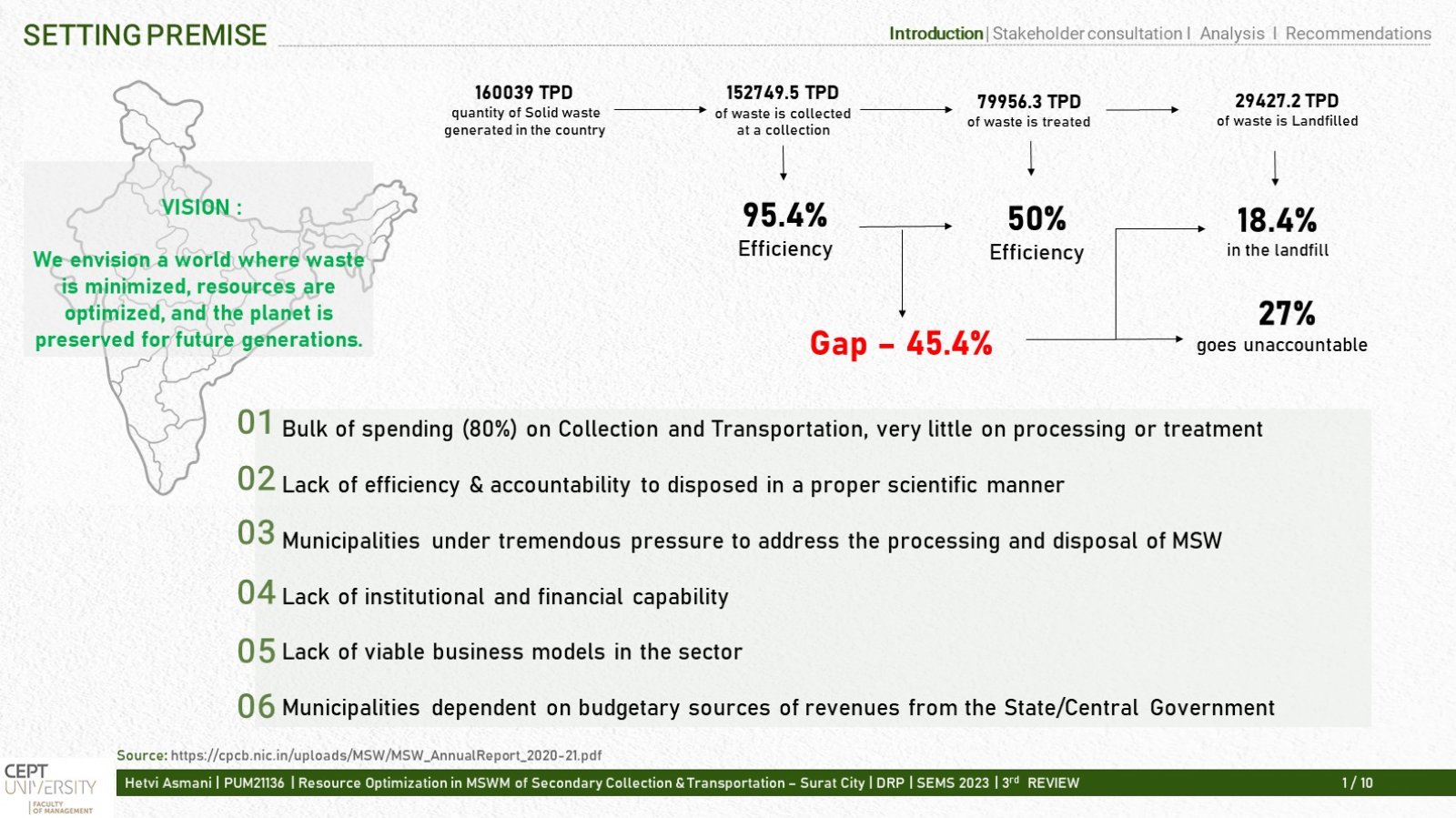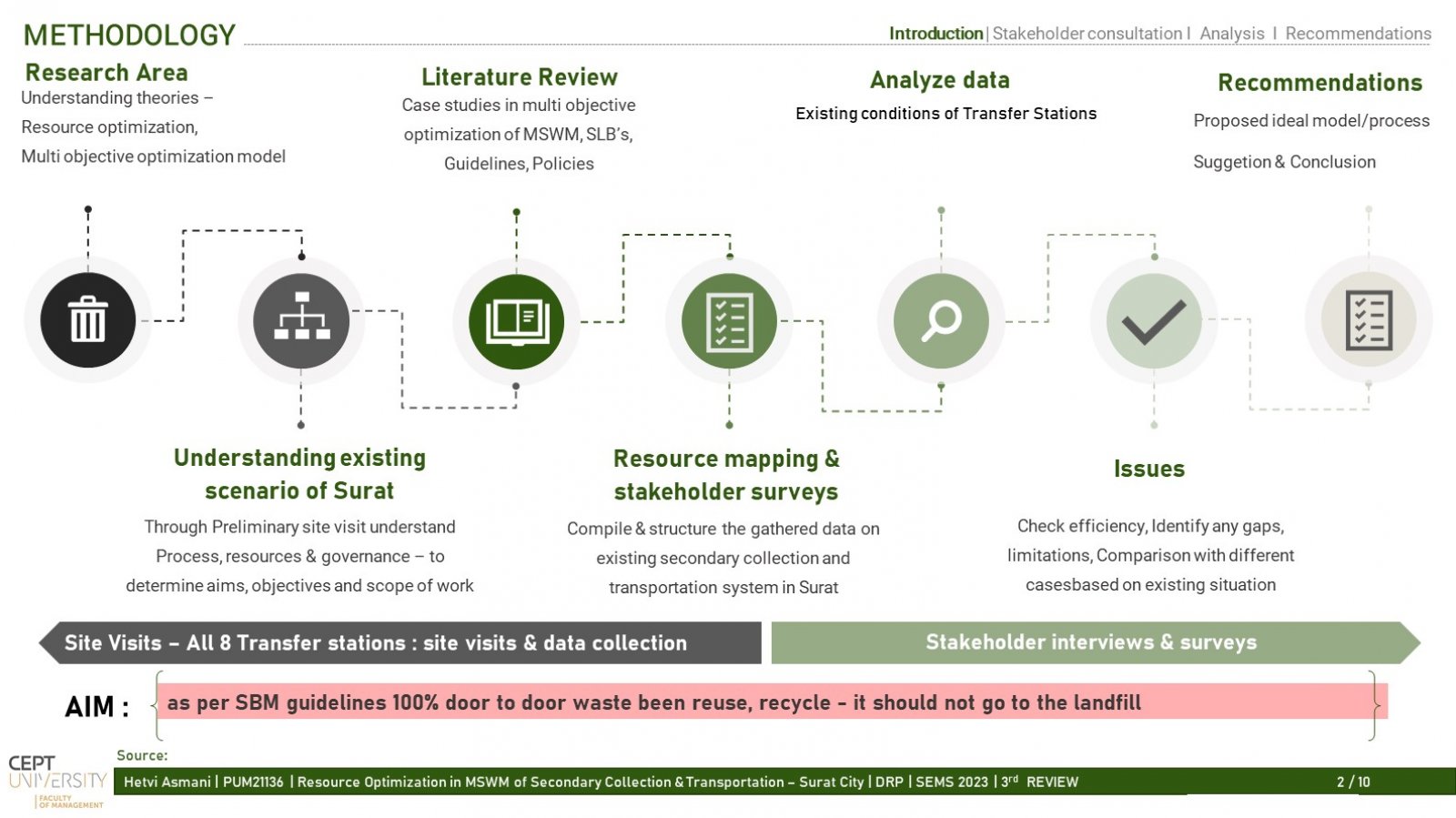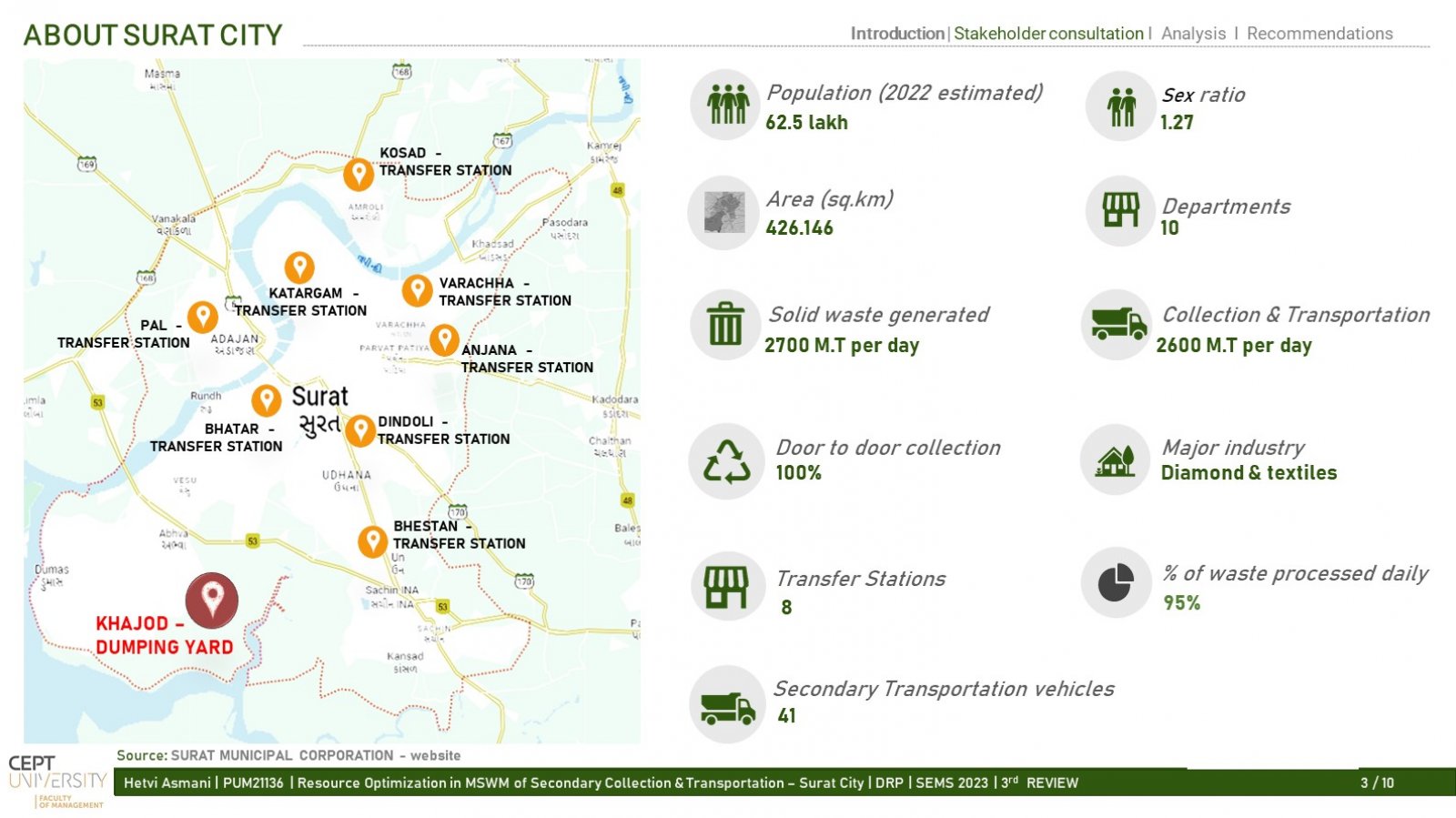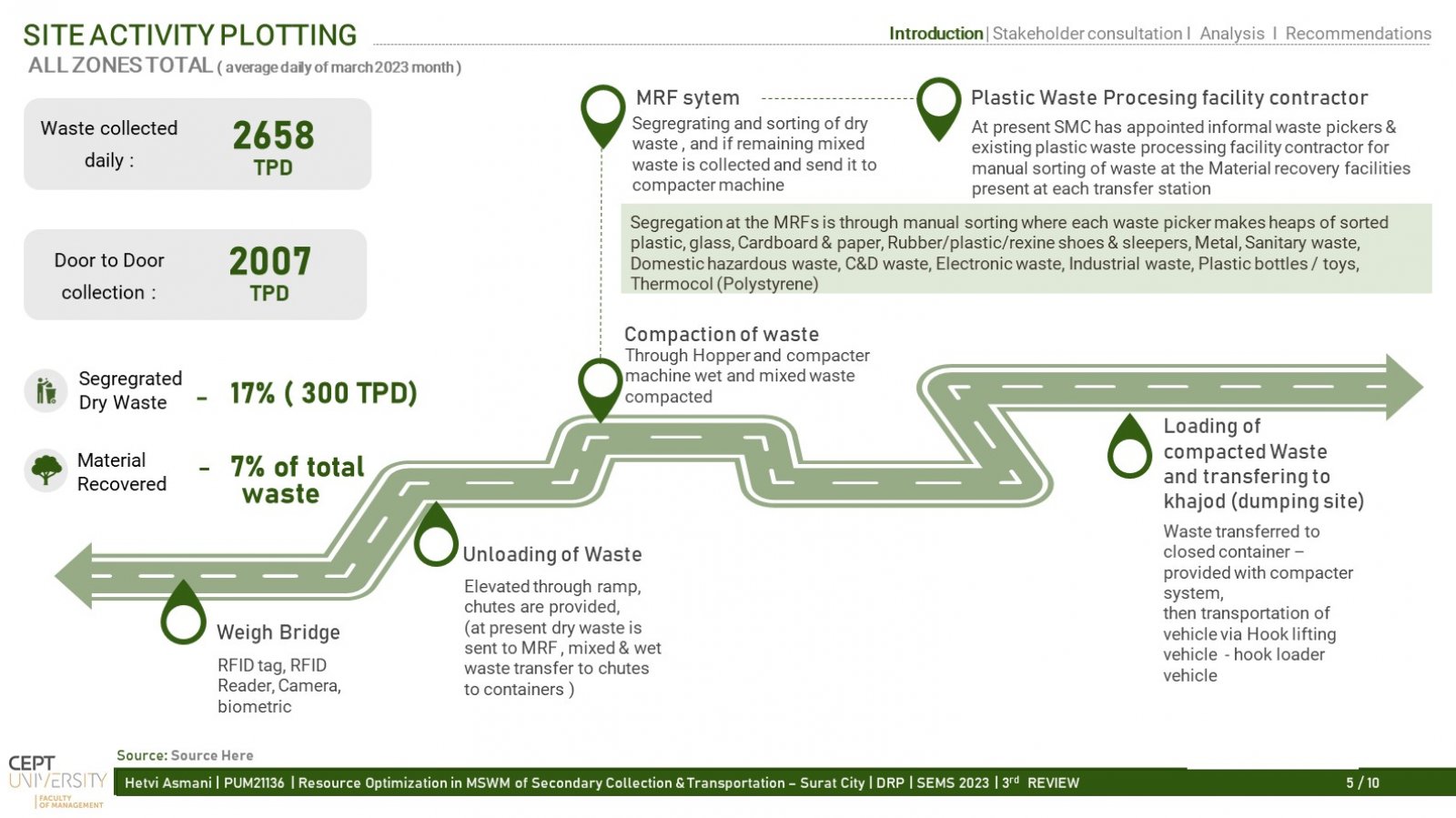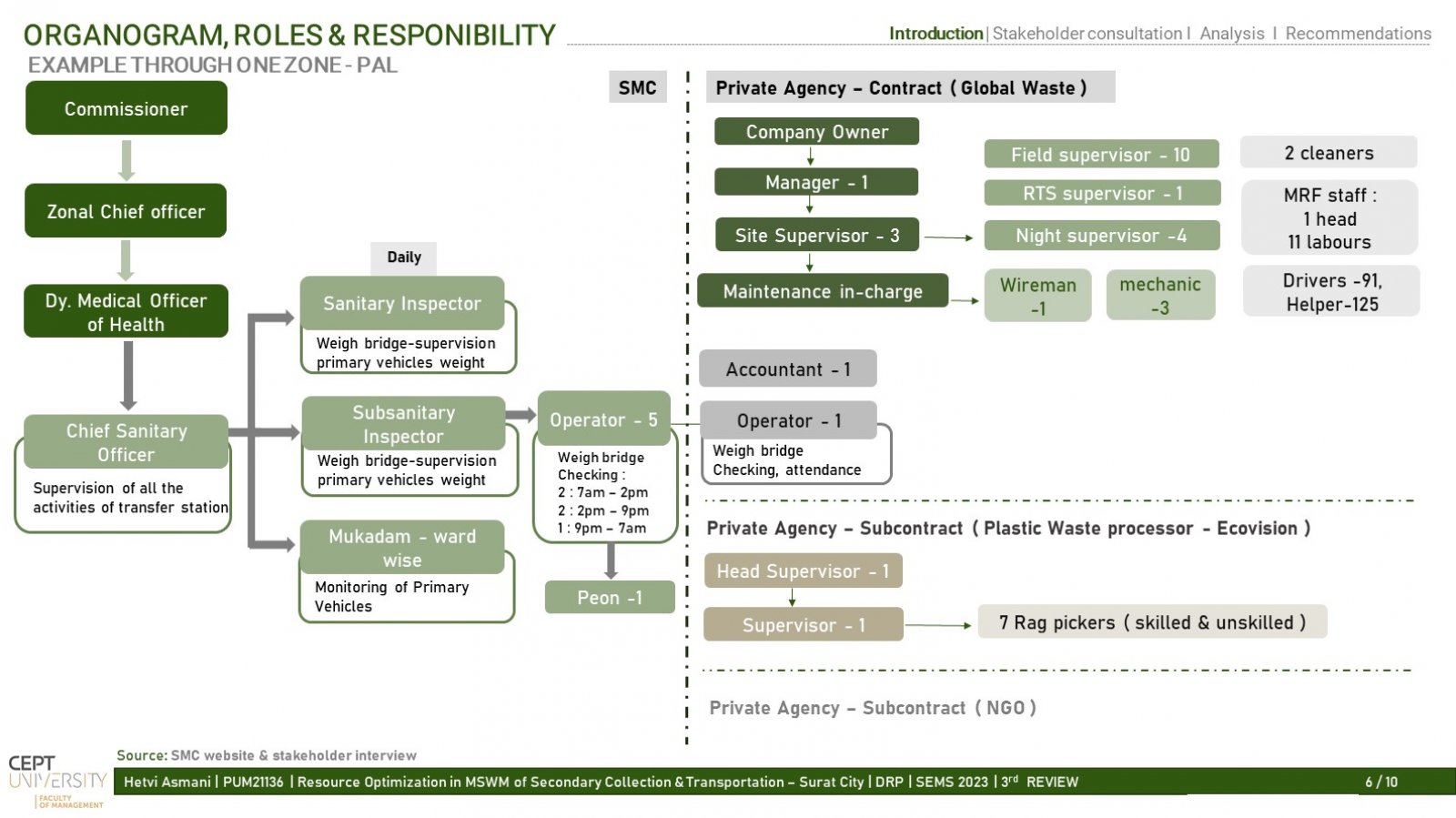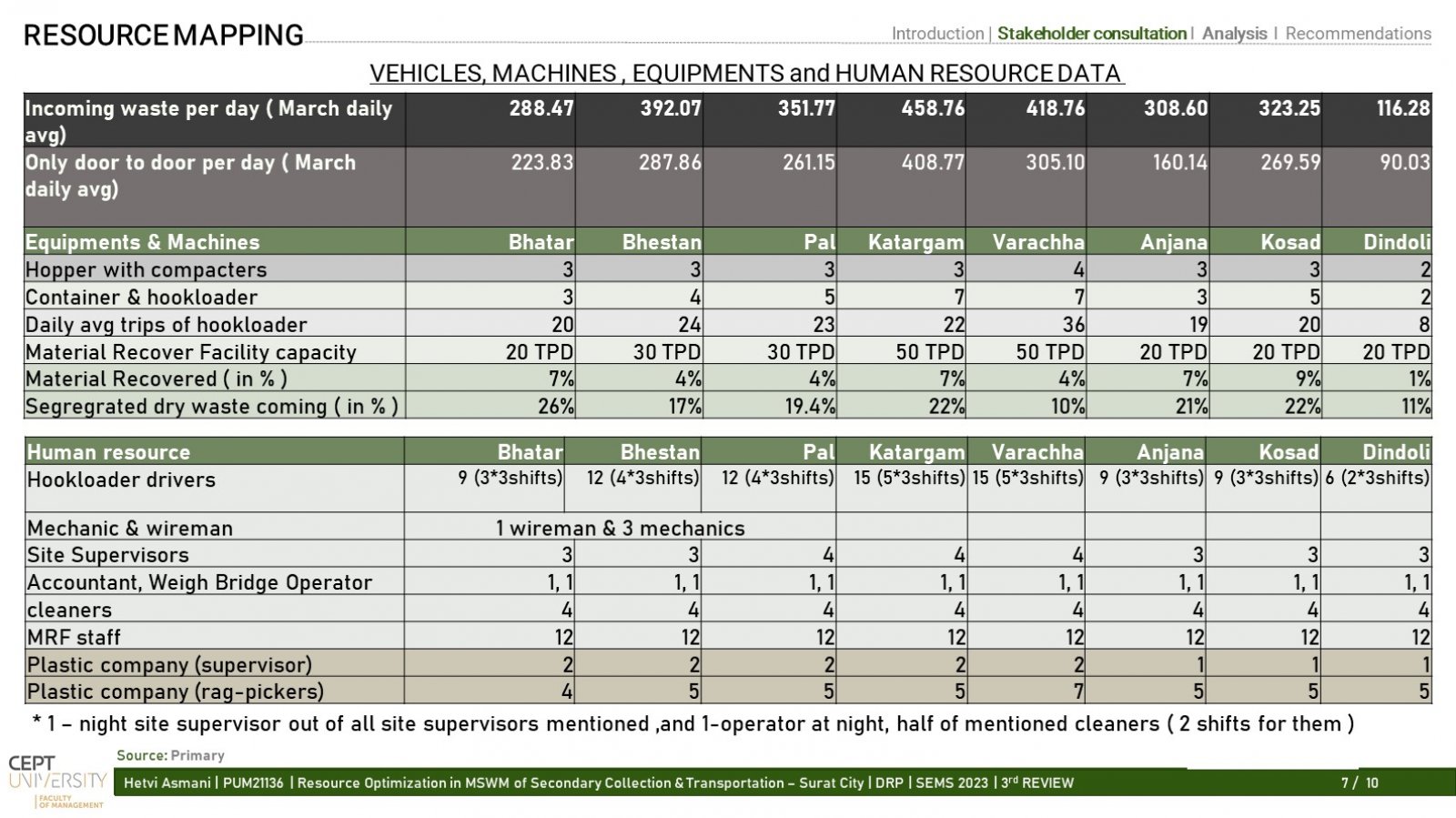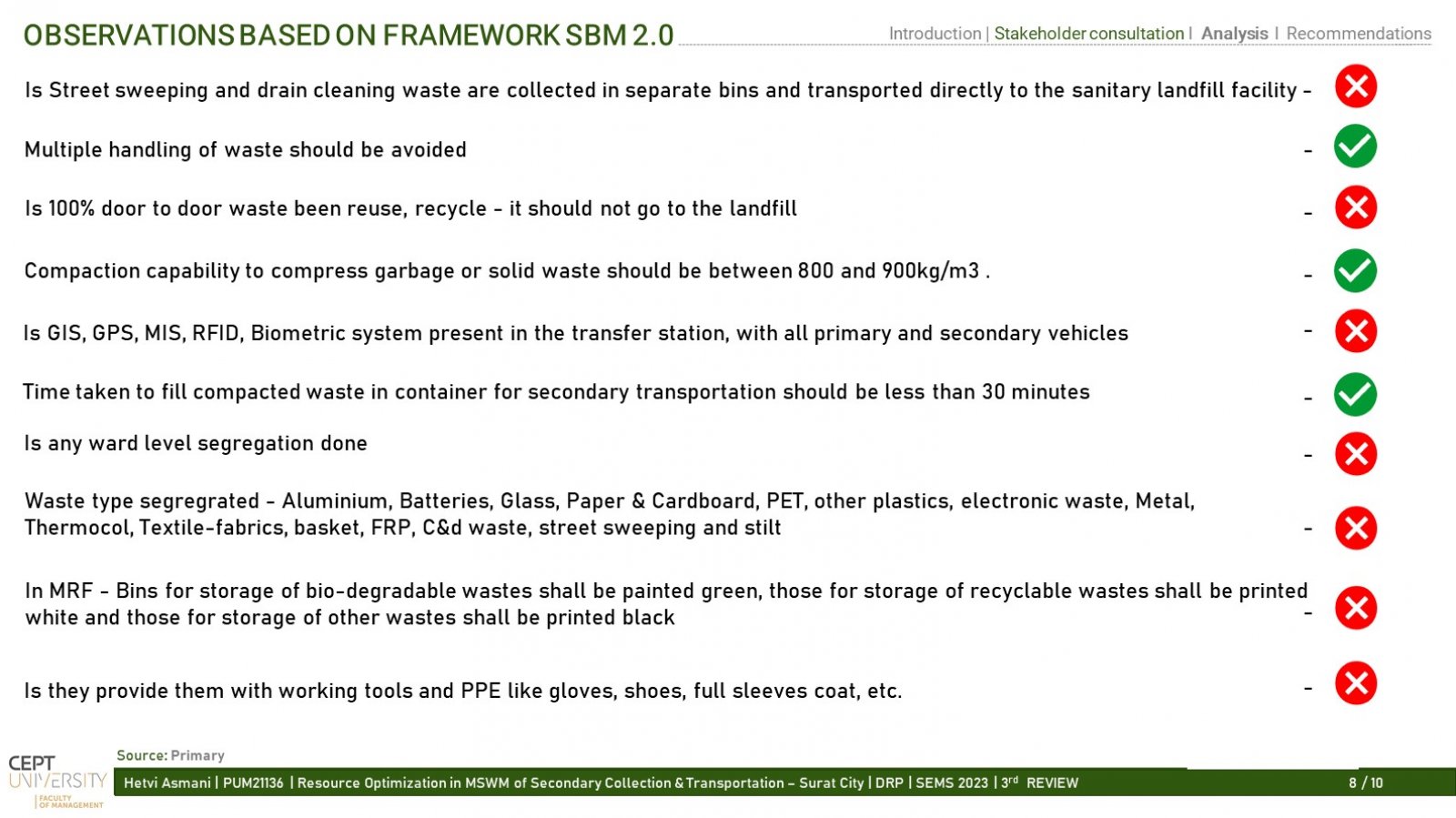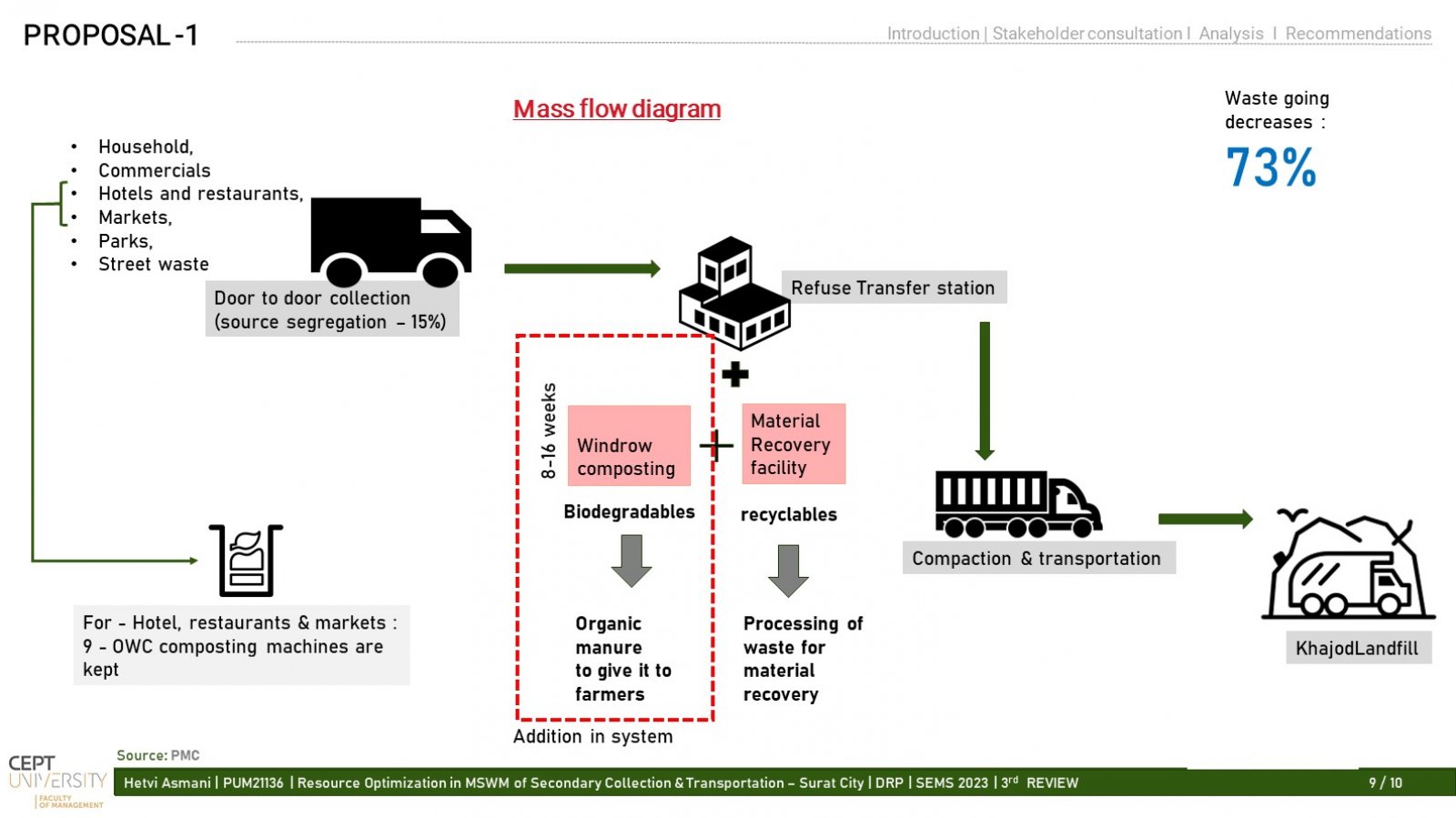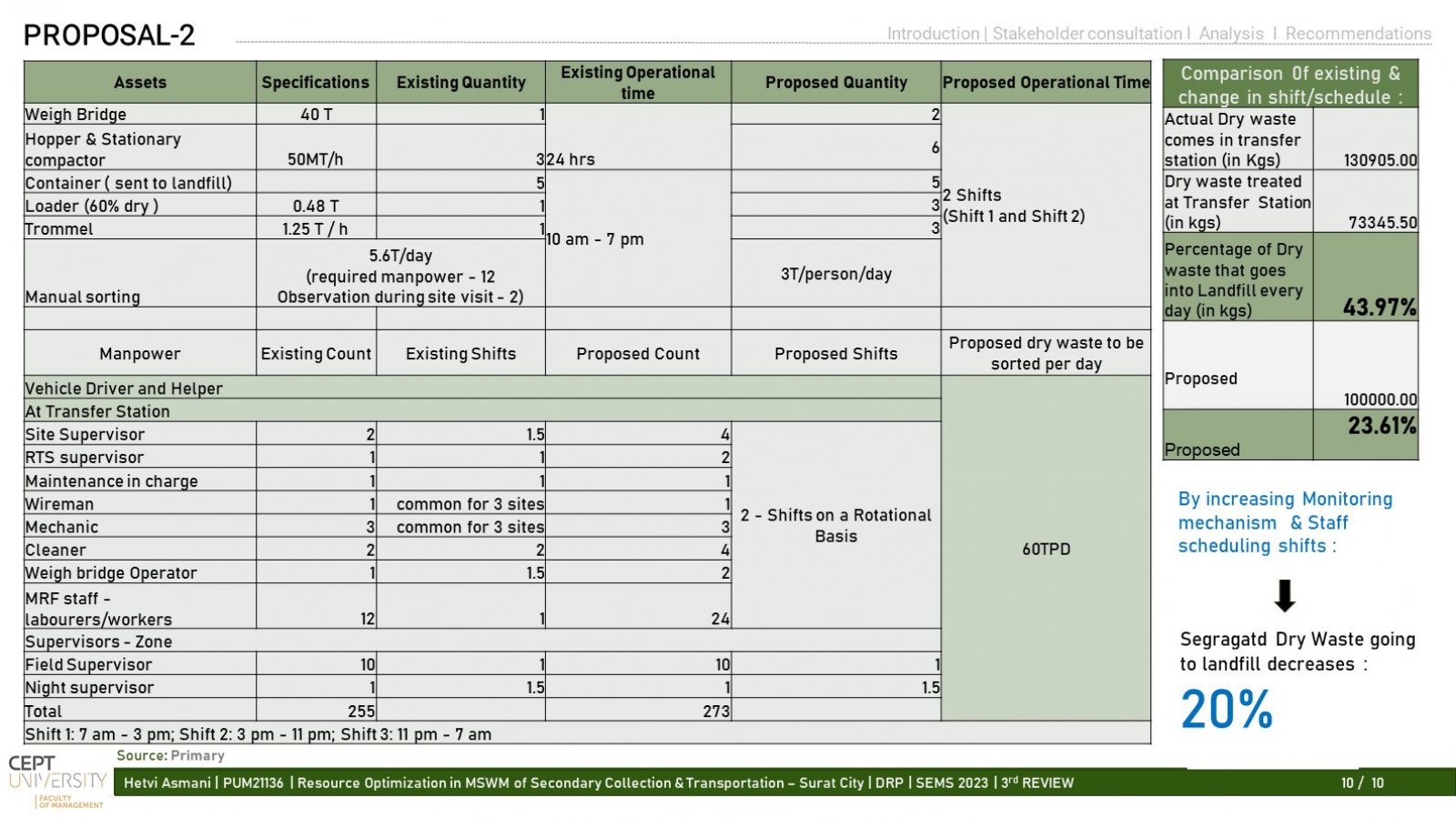Your browser is out-of-date!
For a richer surfing experience on our website, please update your browser. Update my browser now!
For a richer surfing experience on our website, please update your browser. Update my browser now!
Optimization Approach means choosing the best possible method and elements to increase the efficiency and effectiveness of existing systems. Operations of a transfer station, as well as Primary and Secondary vehicles, had always been a big challenge in terms of sustainability and minimising its costs to reach its maximum potential. As per the MOHUA report of SBM-Urban guidance on efficient collection and transportation of MSWM around 80% of total expenditure is spent on Vehicles for collection and transportation, while very less is spent on processing or treatment. In our country, less than 5% of waste is disposed of by using proper scientific manner and treatment. As MSWM planning is a complex problem and higher rate of waste generation and management of it is a great challenge of the Surat city of Gujarat. At present year 2023, Surat has a population of around 62.5 lakhs and due to rapid urbanization with the increase in population, solid waste management has also become an important activity for the local body. The present study aims to analyze the existing system of the city. Comparing with various service level benchmark studies along with governmental policies has helped to understand the key loopholes, inadequacy and inefficiency in the existing process. The study will provide recommendations for the increase in efficiency of the existing system with the help of optimization techniques for the resource planning and management The study aims to determine the optimal allocation of resources, including manpower, equipment, and vehicles, to maximize the efficiency and effectiveness of the secondary collection and transportation system while minimizing costs and reducing the environmental impact.
View Additional Work